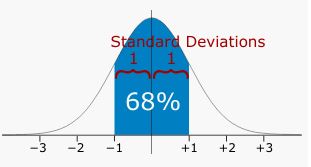The Research and Development (R&D) tax credit is a government incentive designed to encourage businesses to invest in innovation and technological advancement. It offers a dollar-for-dollar reduction in tax liability for companies that engage in qualified R&D activities, such as developing new products, processes, or software. To be eligible, the activities must meet specific criteria, including improving functionality, performance, or quality. Businesses in various industries can claim this credit, and it applies to both small startups and large enterprises. The credit can also be carried forward, providing ongoing financial relief to support future innovation efforts.

What Qualifies as R&D?
Research and Development (R&D) activities are focused on creating or enhancing products, processes, or software through innovative approaches. To qualify as R&D, these activities must involve a structured process of experimentation aimed at resolving technical uncertainties. This could include initiatives like developing new materials, optimizing manufacturing processes, or improving product performance. R&D efforts should aim to push the boundaries of science or technology, demonstrating a commitment to overcoming technical challenges or enhancing functionality.
To be eligible, R&D activities must meet certain criteria, such as having a clear, defined objective, involving scientific or technical experimentation, and focusing on technological innovation. Examples of qualifying activities include designing prototypes, performing lab experiments, or investigating new manufacturing methods. Various industries, from software development to pharmaceuticals and engineering, may benefit from the R&D tax credit, provided they follow established guidelines. The credit incentivizes companies to continually invest in innovation and technological progress, fostering long-term growth and competitiveness.
Eligibility Criteria for R&D Tax Credits
- Qualified Purpose: The activity must focus on developing or improving a product, process, software, or technology with the intention of enhancing performance, functionality, or quality.
- Elimination of Uncertainty: The R&D project should address technical uncertainties, aiming to solve challenges in achieving or improving a process or product.
- Process of Experimentation: The work must involve a structured process of experimentation, such as testing hypotheses, conducting trials, or exploring alternative methods.
- Technological in Nature: The activity must be based in hard sciences like engineering, computer science, or biology, utilizing scientific or technological principles.
- Permitted Purpose: Eligible activities include developing prototypes, product testing, or refining manufacturing techniques.
Expenses Eligible for R&D Tax Credits
Eligible expenses for R&D tax credits encompass a range of costs related to research and development activities. These include:
- Wages: Salaries paid to employees directly engaged in R&D, such as researchers, engineers, and technical staff, are eligible.
- Supplies: Costs for materials and supplies essential to R&D, including equipment for creating prototypes or consumables for testing, qualify for the credit.
- Contract Research: Payments to third-party contractors or consultants who contribute to the R&D project may be eligible, provided their work aligns with the required criteria.
- Software: Expenses related to the development, testing, or enhancement of software as part of R&D activities are also covered.
- Utilities: Overhead costs, such as utilities and maintenance for facilities used in R&D, can be included.
Documentation and Record-Keeping Requirements
Accurate documentation and record-keeping are essential for claiming R&D tax credits. Businesses need to maintain comprehensive records to validate their R&D activities and associated costs. Key documentation includes:
- Project Descriptions: Detailed records describing the goals, scope, and outcomes of R&D projects.
- Time Tracking: Logs that track employee hours spent on R&D tasks, including names, roles, and specific duties performed.
- Expense Records: Receipts, invoices, and financial statements for costs related to wages, supplies, contract research, software, and utilities used in R&D.
- Technical Documentation: Evidence of the research process, such as test results, prototypes, and development milestones.
- Contracts and Agreements: Documentation of agreements with external contractors or consultants involved in R&D activities.
How to Apply for R&D Tax Credits?
Applying for R&D tax credits involves several important steps:
- Identify Eligible Activities: Assess which of your company’s activities qualify for R&D tax credits by focusing on projects that involve technological innovation and systematic experimentation.
- Gather Documentation: Collect all necessary documentation, including detailed project descriptions, time tracking logs, receipts for expenses, technical documentation, and contracts with third-party researchers.
- Calculate Expenses: Precisely calculate the eligible R&D expenses, including wages, supplies, contract research, and utilities, ensuring they meet the criteria established by tax authorities.
- Complete Tax Forms: Fill out the appropriate tax forms for claiming R&D credits, which may differ depending on your location. Ensure all required details are accurately reported.
- Submit Your Claim: File your claim with the relevant tax authority, attaching all supporting documentation.
- Monitor and Respond: Track the status of your claim and be ready to provide additional information if requested by tax authorities.
Benefits of R&D Tax Credits for Businesses
R&D tax credits offer substantial benefits for businesses by alleviating the financial costs associated with research and innovation. These credits provide a direct reduction in tax liability, which can significantly decrease a company’s tax burden. This financial relief enables businesses to reinvest savings into further R&D, promoting sustained innovation and growth. Additionally, R&D tax credits can enhance cash flow by delivering immediate tax savings or refunds. They also encourage companies to pursue high-risk, innovative projects that might be financially prohibitive otherwise. By capitalizing on these credits, businesses can gain a competitive advantage, drive technological progress, and ensure long-term success.
State-Level R&D Tax Credits vs. Federal Credits
| Aspect | Federal R&D Tax Credits | State-Level R&D Tax Credits |
|---|---|---|
| Scope | Nationwide; applies uniformly across all states. | Varies by state; different credits and benefits per state. |
| Eligibility | Based on federal guidelines; focuses on innovation, experimentation, and technological advancement. | Often tailored to state-specific industries or priorities; may have additional criteria or incentives. |
| Benefit | Provides a significant reduction in federal tax liability; can be substantial for qualifying activities. | Offers additional financial relief on top of federal credits; reduces state tax liabilities and may provide unique incentives. |
| Application | Requires detailed documentation and adherence to federal regulations, including specific forms and criteria. | Requires compliance with state-specific guidelines, forms, and documentation, which may differ from federal requirements. |
Note: Both federal and state-level credits can be used together to maximize overall benefits, but businesses must navigate the distinct rules and processes for each level.
Conclusion
Maximizing the benefits of R&D tax credits involves a strategic approach to identifying and documenting eligible activities and expenses. By thoroughly understanding both federal and state-level credit opportunities, businesses can effectively reduce their tax liabilities and enhance financial resources for ongoing innovation. Accurate record-keeping, precise expense calculations, and compliance with regulatory requirements are crucial. Leveraging both federal and state credits can provide significant financial relief and encourage further investment in research and development. This proactive approach not only supports continuous technological advancement but also strengthens a company’s competitive edge and long-term success.
Frequently Asked Questions (FAQs)
1. What types of activities qualify for R&D tax credits?
Activities that qualify for R&D tax credits typically involve systematic experimentation aimed at resolving technical uncertainties. This includes developing or improving products, processes, or software, and can encompass tasks such as designing prototypes, conducting lab tests, or exploring new manufacturing techniques.
2. How do I determine the eligible expenses for R&D tax credits?
Eligible expenses include wages for employees directly involved in R&D, costs for supplies and materials, payments to contract researchers, software development expenses, and certain utilities related to R&D activities. Detailed records and accurate calculations of these expenses are necessary for claiming the credits.
3. What documentation is required to claim R&D tax credits?
Essential documentation includes project descriptions, time tracking logs for R&D activities, expense receipts and invoices, technical documentation of the R&D process, and contracts with third-party researchers. Proper record-keeping ensures compliance with tax regulations and supports the accuracy of your claim.
Read More:
- Mutual Funds and Taxes: How Income Tax Slabs Affect Your Returns
- What are tax-free annuity exchanges?
- 13 tax-free incomes in India – every investor should know
- Tax Return Tips for Last-Minute Filers

Hello, I am Tanisha Kriplani, graduated in computer science from Delhi University. I am passionate about web content writing and have a strong interest in Data Analytics and Data Engineering.












